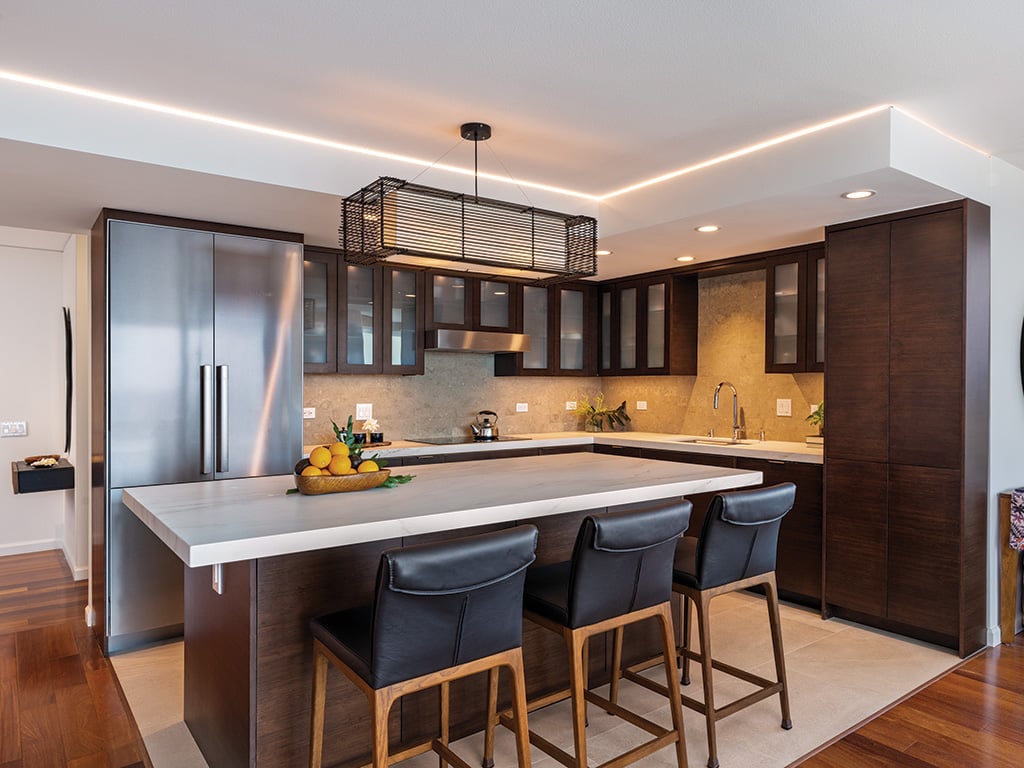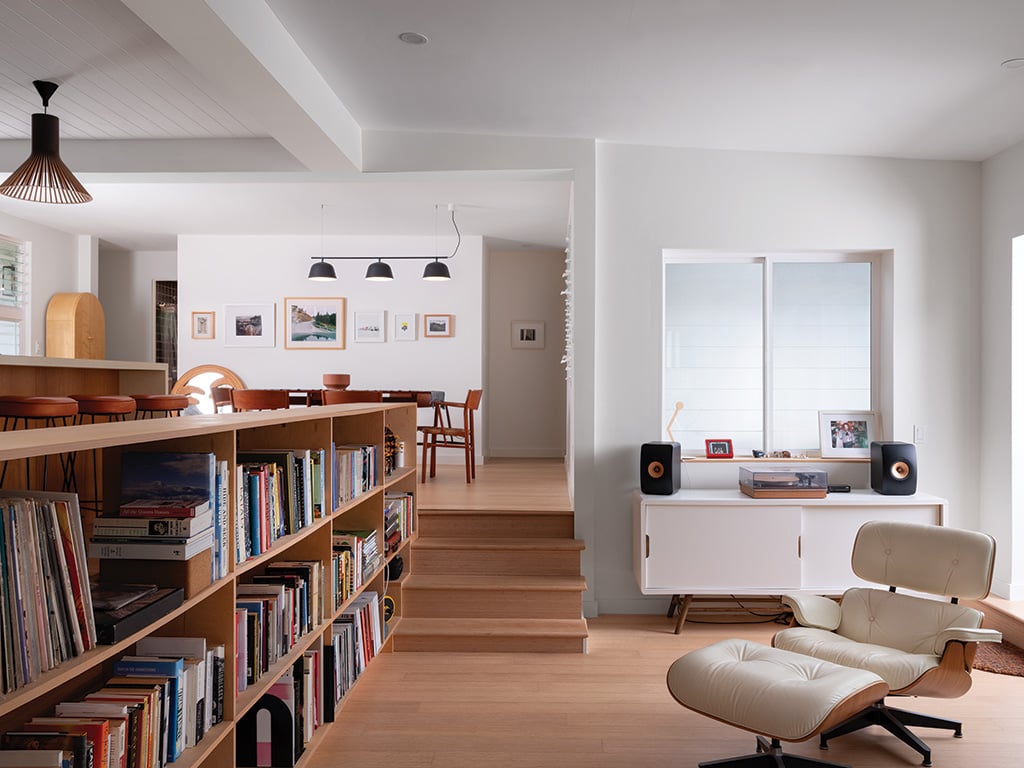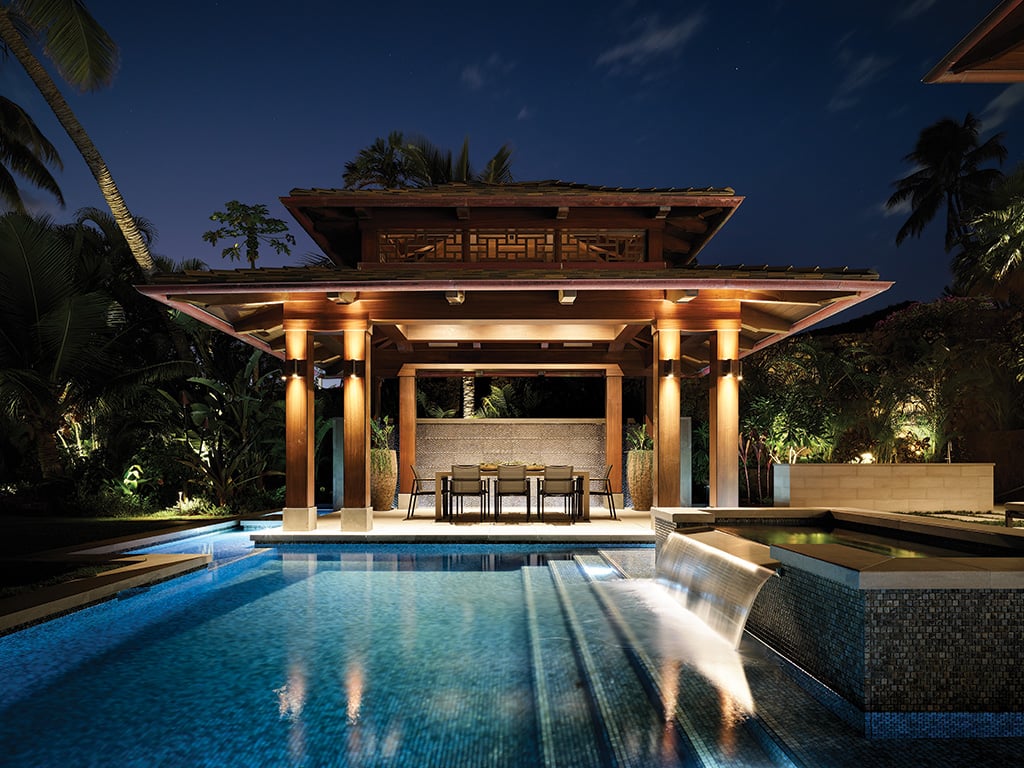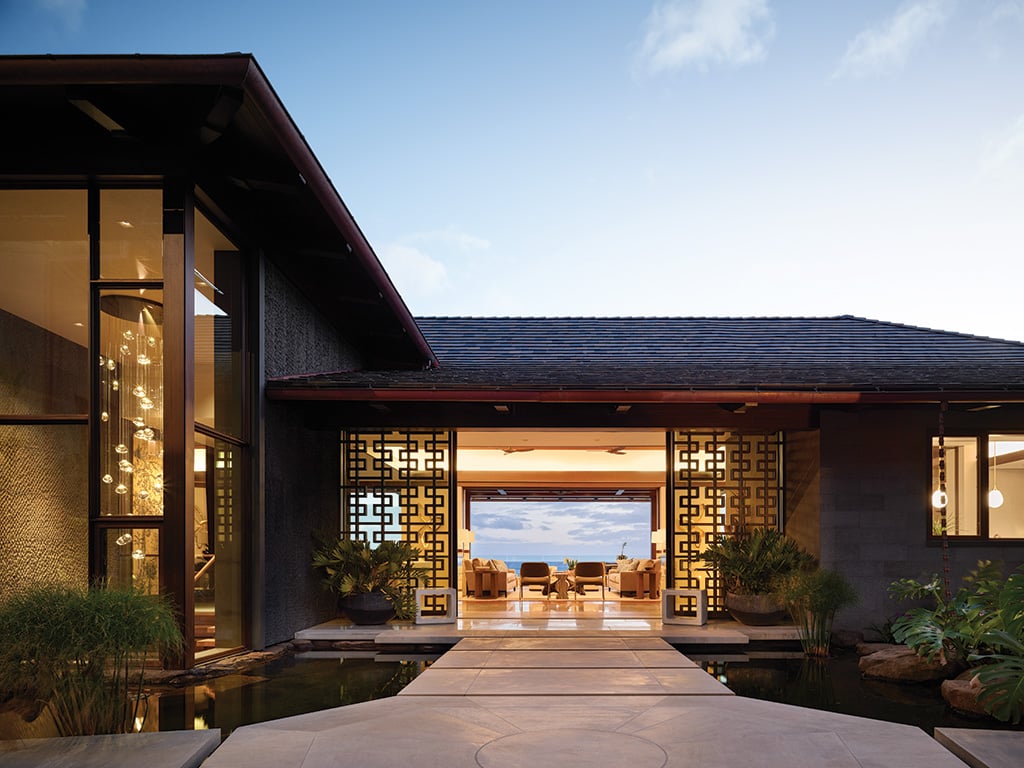LEED the Way
Local architects reflect on the progress of sustainable practices in residential building and remodeling.

As more Island homeowners consider “green building” options and seek out vendors and contractors with Leadership in Energy and Environmental Design (LEED) certifications, industry practices are evolving to meet new eco-friendly standards as well. We caught up with local architects to get their thoughts on environmental considerations for your projects. Responses are edited for length and clarity.

“A home should be a place that improves your health,” says Chuen Yee of MCYIA. Incorporate features and finishes that promote physical well-being.
MCYIA
As told by Chuen Yee, principal and interior designer
How important has sustainability become in residential architecture and building?
We continue to see steady growth as the general public becomes more informed on the benefits of sustainability. While most clients want sustainable products, it’s one of the first things to get value-engineered out when the overall project costs exceed budget.
What are some of the ways you incorporate sustainability in residential projects?
We educate and place a high emphasis on incorporating sustainability for wellness. Volatile Organic Compounds (VOCs) and other toxins can be found in paint and many other construction materials and products. Phthalates are endocrine disruptors that are often found in soft vinyl products such as shower curtains and vinyl flooring. Formaldehyde can be found in engineered wood products such as particle board, MDF and plywood. Adhesives used in flooring and wood products can also be a significant source of harmful VOCs. We recommend low- and zero-VOC paints to improve indoor air quality.

MCYIA is known for projects that promote sustainability for wellness. Energy Star-rated appliances and energy-efficient lighting are key considerations homeowners can apply to a build or remodel.
How can homeowners be mindful of sustainability with renovations or new builds?
Start with the basics: Energy Star-rated appliances and energy-efficient lighting should be automatic, as it saves on expensive electricity. Next, move to wellness — a home should be a place that improves your health. Aside from being selective with sustainable products, incorporate natural sunlight and ventilation. Finally, explore how you can do your part to help our planet: Buy locally made products. Buy used or recycled products. Support manufacturers that minimize the use of harmful chemicals and their carbon footprint.

Embracing natural resources and the surrounding environment, the rooms and spaces in this Papaaloa Homestead project by Craig Steely seamlessly bridge indoor and outdoor living.
Craig Steely Architecture
As told by Craig Steely
How important has sustainability become in residential architecture and building?
It’s encouraging to see that sustainable building practices have become mainstream and are no longer viewed as unapproachable or a luxury. Building with sustainability in mind has become as crucial to architectural design as a functional floor plan.
What are some of the ways you incorporate sustainability in residential projects?
Our first design parameters come from the site. We center every design around creating cross ventilation to cool and keep things dry, and mitigating sun for comfort while still providing light. In terms of mechanical systems, all of our recent projects have been off-grid, even the ones that could have been connected.

The Papaaloa Homestead project is an off-grid abode designed with a spoke-and-wheel layout for panoramic views of the Hawaii Island coast.
How can homeowners be mindful of sustainability with renovations or new builds?
In my studio, we include longevity in any conversation about sustainability. It’s too easy to discount certain materials or processes based on expense or other criteria. Consider the longevity or lack of maintenance required for upkeep when selecting any material.

Understanding sun direction, weather patterns and wind flow are important in sustainable building and design by architects Ryan Fujita and Chris Netski.
Fujita + Netski Architecture
As told by Ryan Fujita and Chris Netski
How important has sustainability become in residential architecture and building?
Sustainability should be the starting point of any architectural project, especially in our Islands. We have witnessed an increased dedication from both clients and building professionals to pursue projects that are more environmentally conscious, and we only see that trend continuing to grow.
What are some of the ways you incorporate sustainability in residential projects?
Our firm always begins with a site and solar analysis to evaluate the property’s key features. We identify areas that receive lots of sun, areas that have indirect sunlight, and the direction of the weather, wind and water. This is an important part of our design process that aids in determining the placement of rooms, determining window size and types … and many other decisions that homeowners are faced with.
How can homeowners be mindful of sustainability with renovations or new builds?
Being mindful of solar orientation and the trade winds are two great ways to start. For example, homeowners may consider adding lanai spaces towards the south or west to filter direct sunlight and minimize interior heat gain. Also, homeowners may consider having larger window openings to the northeast to capture the trade winds and reduce the need for air conditioning. Another important trend we are happy to see emerge is more native plant gardens and less water-demanding yards/landscapes.
Editor’s Note: This article has been slightly modified from the original print version for optimal online reading. To view the full print story, pick up your copy of Hawaii Home + Remodeling at one of our partner locations.






